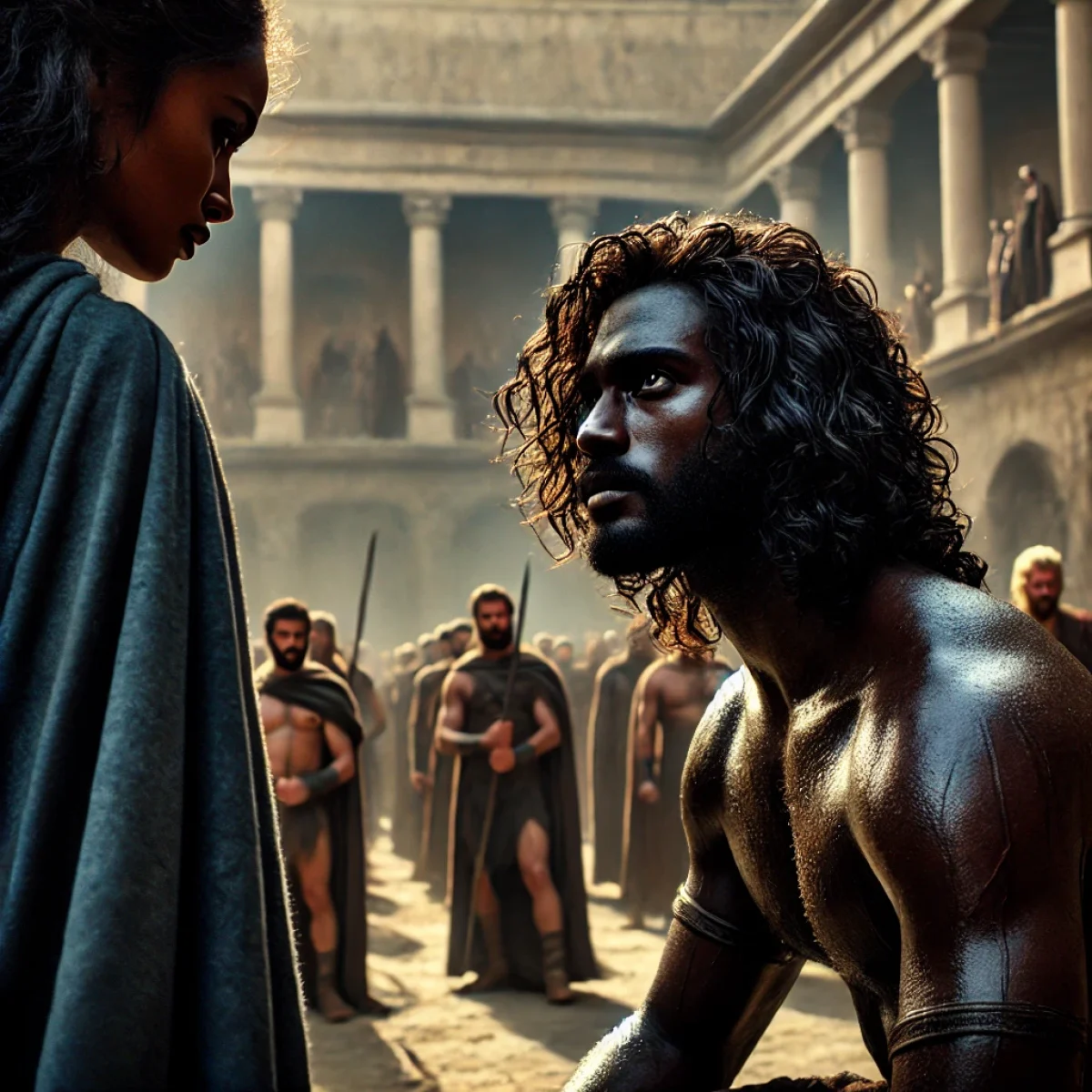Novella 1: The Mark of the Orisha – Clarified Edition
In this tale, destiny calls through sacred waters and ancient wisdom. A child of prophecy, Ama, is drawn into a journey where her very body is a temple of divine creation, and every challenge she faces is a step toward embracing her true nature.
I. A Vision in the Waters
Ama, a destined child of the Akan, is lured by the soft murmur of the sacred river Oshun before dawn. In her dreams, a radiant, golden goddess appears—a vision of divine beauty and fertility. This goddess, with glowing copper-toned skin, luminous eyes like the burning sun, and flowing locks that mirror the river’s current, embodies the natural splendor of the human form. Every curve of her body is a celebration of life itself, urging Ama to see her own form as sacred and worthy of praise.
As Ama approaches the river, the water seems to speak, inviting her into a realm where fate is inscribed in each ripple. Even as a spectral guardian briefly emerges—warning her that her vision is the call of destiny—Ama finds her resolve strengthened. The guardian’s message is clear: to embrace this divine destiny, she must step boldly into the unknown, accepting both the beauty and the trials that come with her sacred mark.
II. The Elders’ Warning
Soon after, Ama is summoned to the ancient grove where the village elders, custodians of wisdom and lore, await her. In a solemn circle beneath a starry sky, they reveal that the mark of the Orisha is no mere symbol—it is a profound blessing intertwined with daunting challenges. The elders remind her that her journey will demand both strength and sacrifice. They speak of ancient prophecies and the sacred duty to honor one’s body, which is the very vessel of life and creation.
Their lesson is immediately tested when dark forces attack the gathering. In a swift and intense clash—an action scene where shadowy foes rise from the undergrowth—Ama and the elders defend their sacred charge. In the heat of battle, every parry and incantation becomes a dialogue between the ancient forces of light and the encroaching darkness. This confrontation not only fortifies Ama’s resolve but also reinforces the truth: her path, though perilous, is also her destiny.
III. Whispers from the Cosmos
That very night, under the soft glow of the moon, Ama finds herself alone with the cosmos. The stars above become messengers, their light woven with the language of her ancestors. In gentle whispers, the universe imparts wisdom: every natural symbol—the spirals in the river, the patterns in the ancient trees, and the geometry of the night sky—is a sign of the path she must follow.
In this cosmic dialogue, Ama is urged to trust her inner strength. When a sudden storm of wind and dust challenges her resolve in a vivid action scene, the echo of her ancestors’ words—“It is yours, pave your own way!”—rings clear. This moment of physical trial is also a spiritual test, urging her to confront her fears and embrace the guidance of the universe.
IV. The River’s Baptism
With the first light of dawn, Ama returns to Oshun for a transformative rite. Here, the river becomes both her sanctuary and her crucible. As she steps into the churning water, she feels its force—a wild, untamed energy that is both a test and a blessing. In a breathtaking, tumultuous baptism, the goddess from her dreams reappears, affirming that Ama’s physical form is not a source of shame but a living, sacred expression of life.
In a series of vivid, almost surreal action sequences, the water envelops her, swirling with golden threads that seem to inscribe the very essence of her destiny upon her skin. This baptism is not merely a ritual of cleansing; it is a rebirth. Ama emerges transformed—a living symbol of the Orisha’s mark, with her body and spirit forever intertwined with the eternal cycle of creation.
V. The Rebirth of the Orisha
Now reborn, Ama embarks on a new phase of her journey as a beacon of hope and divine promise. Along the way, she meets Kwabena, a wise wanderer who understands the ancient lore and the power of the sacred mark. Their conversation is a gentle, yet profound exchange about the responsibilities that come with divine destiny. Kwabena explains that Ama’s mark is a covenant with the cosmos—a reminder that every scar and every curve is a verse in the ongoing saga of life.
Together, they face further challenges—moments of intense conflict where physical and spiritual battles converge. In these trials, Ama learns that every confrontation, every act of defiance against the darkness, deepens her understanding of herself and her sacred purpose. The mark of the Orisha is not merely a physical imprint but a luminous promise: that in honoring the beauty and strength of the natural body, one can also awaken the divine potential within.
Thus, the story of Ama unfolds as a journey of transformation and truth. From the whispered visions by a sacred river to the hallowed counsel of ancient elders, and from cosmic dreams to a fierce baptism of spirit, every step is a clear, resounding call to embrace one’s destiny. In this timeless dance between the mortal and the divine, Ama stands as a testament to the eternal promise of renewal, a radiant symbol of hope and the sacred beauty of life itself.
